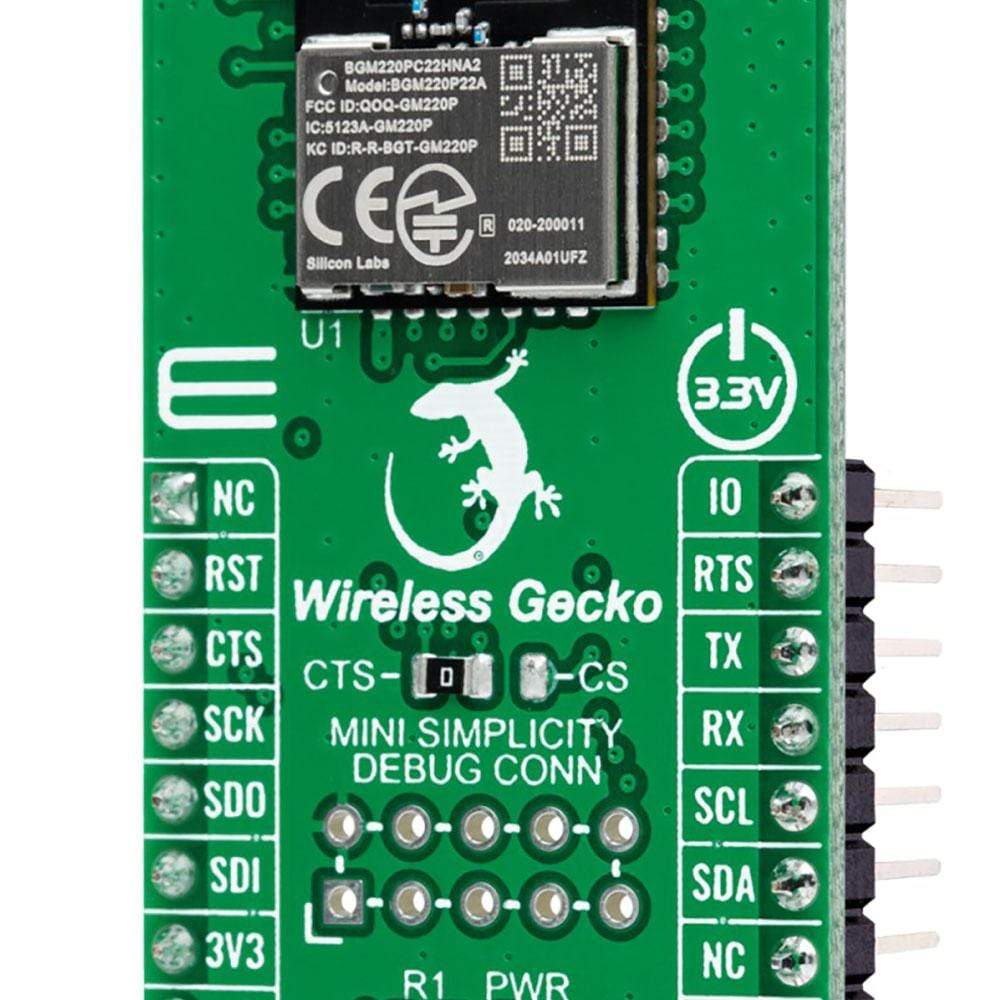
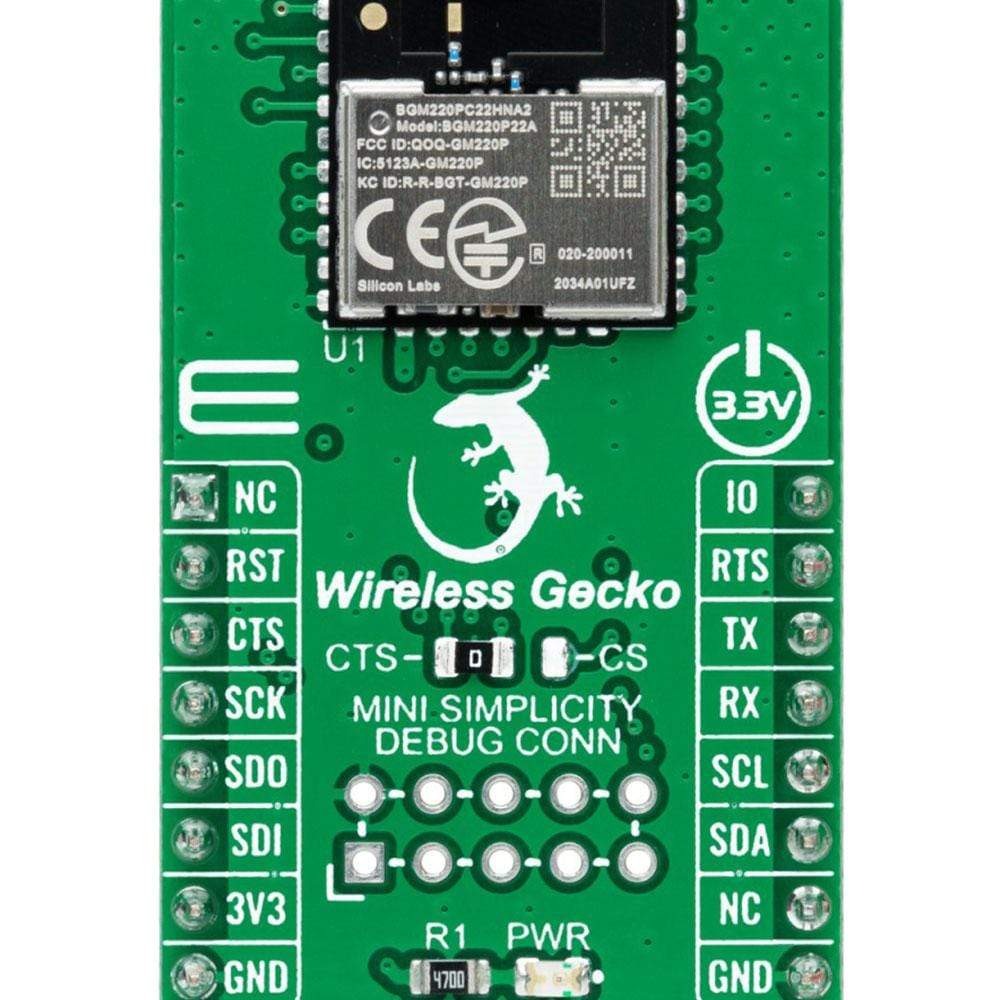
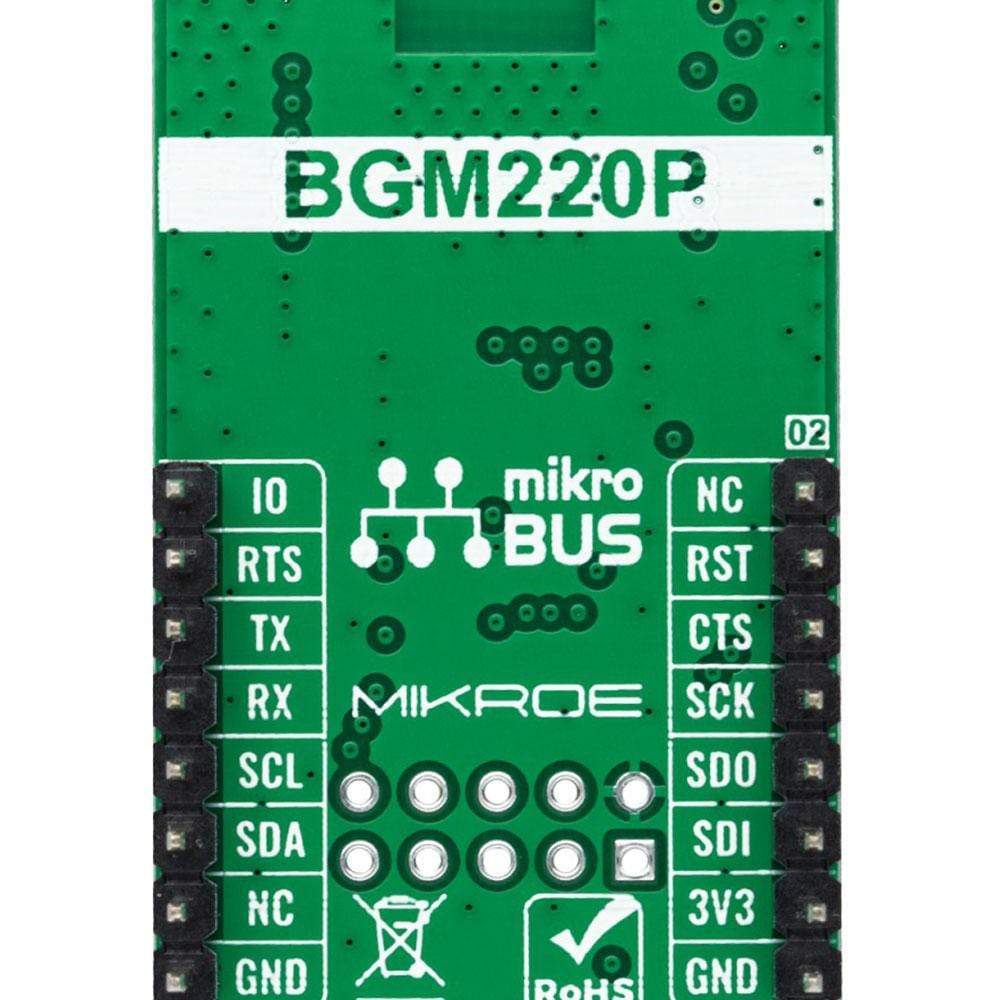
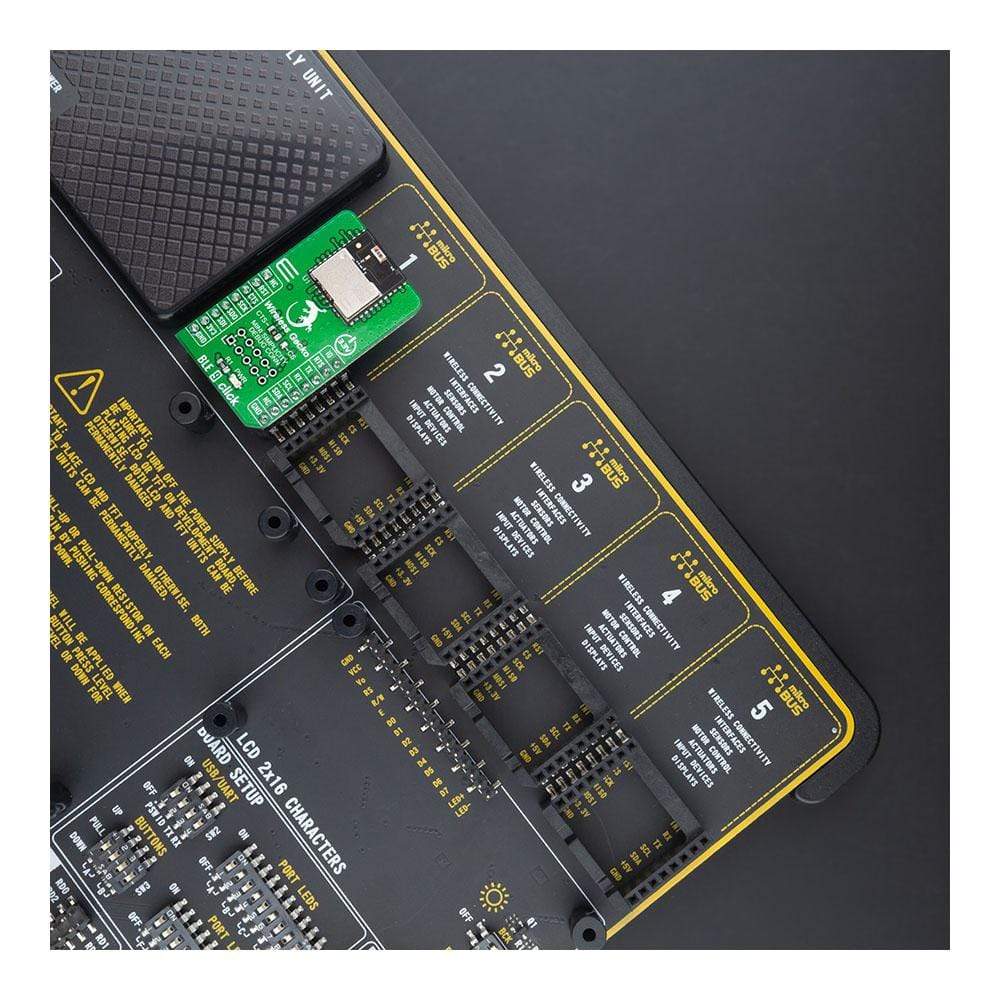
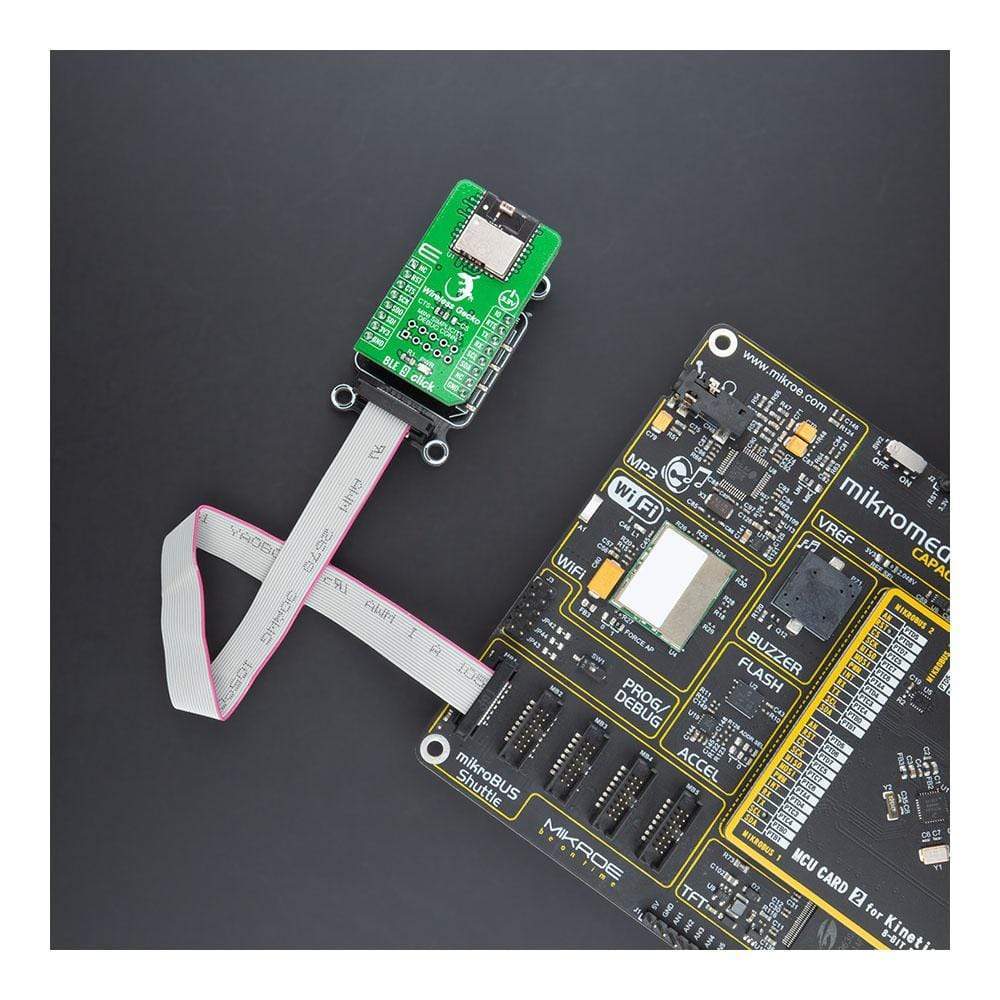
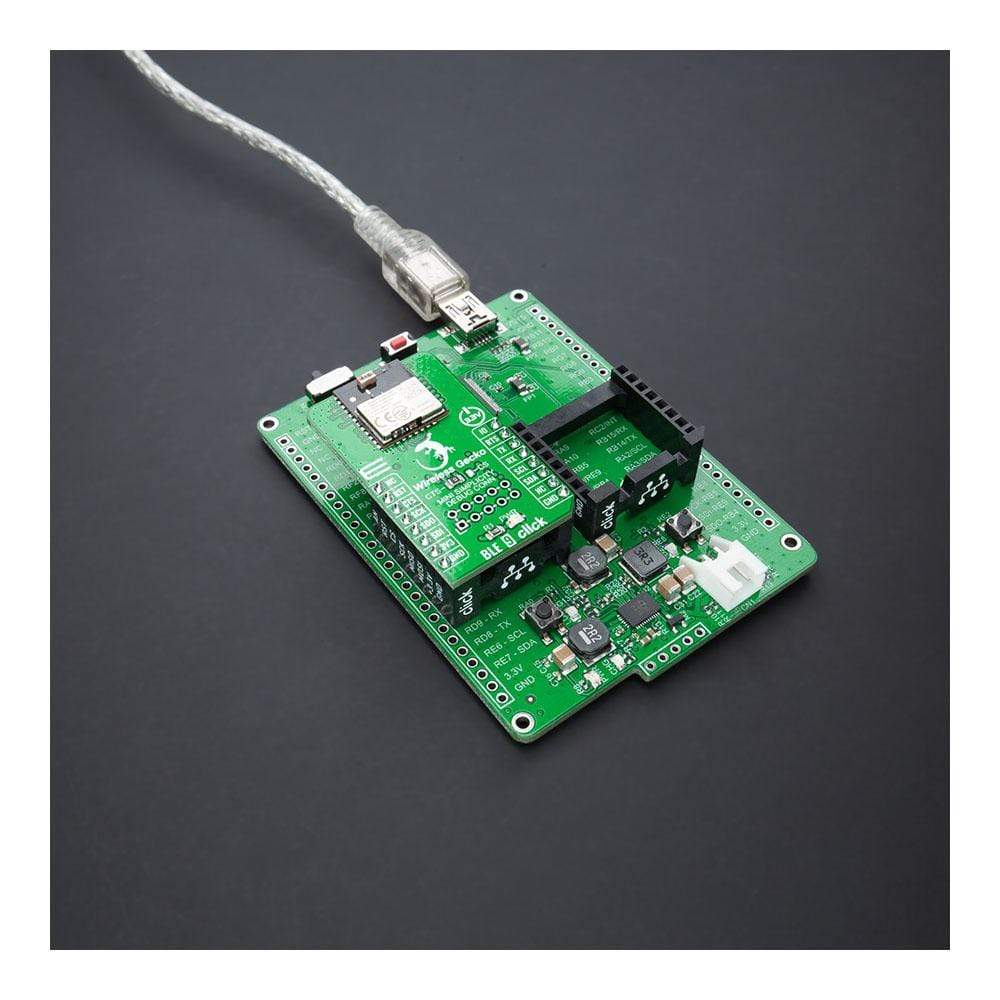
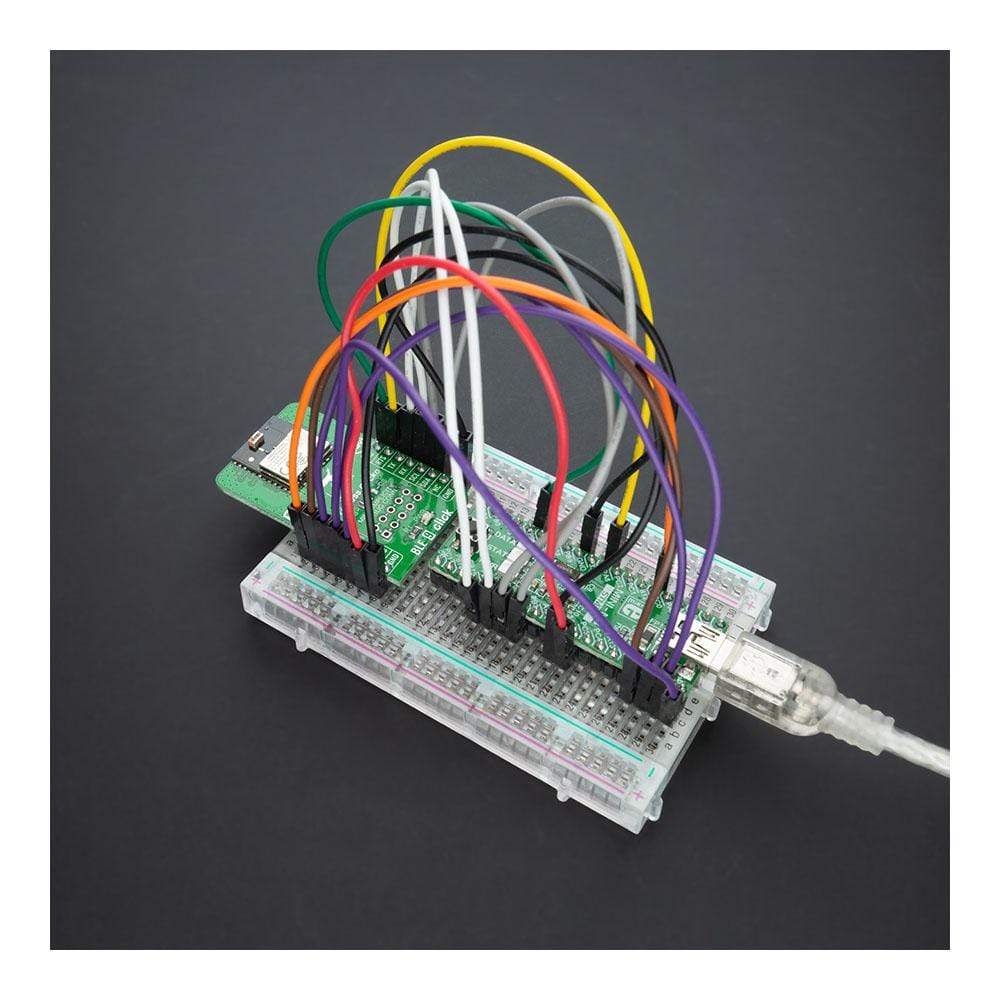
Key Features
Overview
The BLE 9 Click Board™ is a compact add-on board that provides BT/BLE connectivity for any embedded application. This board features the BGM220P, an RF performance Bluetooth Low Energy solution for IoT developers from Silicon Labs. Based on the EFR32BG22 SoC, the BGM220P enables Bluetooth Low-Energy (BLE) connectivity while delivering RF range and performance, firmware updates, enhanced security features, and low power consumption. It is optimized for wireless performance supporting Bluetooth 5.2, direction-finding, and Bluetooth Mesh Low Power Node protocols to deliver industry-leading accuracy. This Click Board™ is suitable for wireless networking in portable medical devices, connected homes, asset tags and beacons, and more.
The BLE 9 Click Board™ is supported by a mikroSDK compliant library, which includes functions that simplify software development. This Click Board™ comes as a thoroughly tested product, ready to be used on a system equipped with the mikroBUS™ socket.
Downloads
Le BLE 9 Click Board™ est une carte complémentaire compacte qui fournit une connectivité BT/BLE pour toute application embarquée. Cette carte est dotée du BGM220P, une solution Bluetooth Low Energy à performances RF pour les développeurs IoT de Silicon Labs. Basé sur le SoC EFR32BG22, le BGM220P permet une connectivité Bluetooth Low-Energy (BLE) tout en offrant une portée et des performances RF, des mises à jour du micrologiciel, des fonctionnalités de sécurité améliorées et une faible consommation d'énergie. Il est optimisé pour les performances sans fil prenant en charge les protocoles Bluetooth 5.2, de radiogoniométrie et Bluetooth Mesh Low Power Node pour offrir une précision de pointe. Ce Click Board™ convient à la mise en réseau sans fil des appareils médicaux portables, des maisons connectées, des étiquettes et des balises d'actifs, etc.
Le BLE 9 Click Board™ est pris en charge par une bibliothèque compatible mikroSDK, qui comprend des fonctions qui simplifient le développement logiciel. Cette Click Board™ est un produit entièrement testé, prêt à être utilisé sur un système équipé du socket mikroBUS™.
| General Information | |
|---|---|
Part Number (SKU) |
MIKROE-4487
|
Manufacturer |
|
| Physical and Mechanical | |
Weight |
0.018 kg
|
| Other | |
Country of Origin |
|
HS Code Customs Tariff code
|
|
EAN |
8606027381775
|
Warranty |
|
Frequently Asked Questions
Have a Question?
Be the first to ask a question about this.







